The first ‘Innovation and Technology in Transport’ show finally took place at the end of June at Farnborough airport. The show had been postponed thanks to Covid pandemic, but was well worth waiting for. DAF used the show as their opportunity to get their new XG range of long distance cabs in front of the cameras and customers, whilst more truck makers attended than we can remember showing at the CV Show in a long time.
The truck manufacturers stands were relatively low key – but so much the better for it – more informal and easy to wander around.
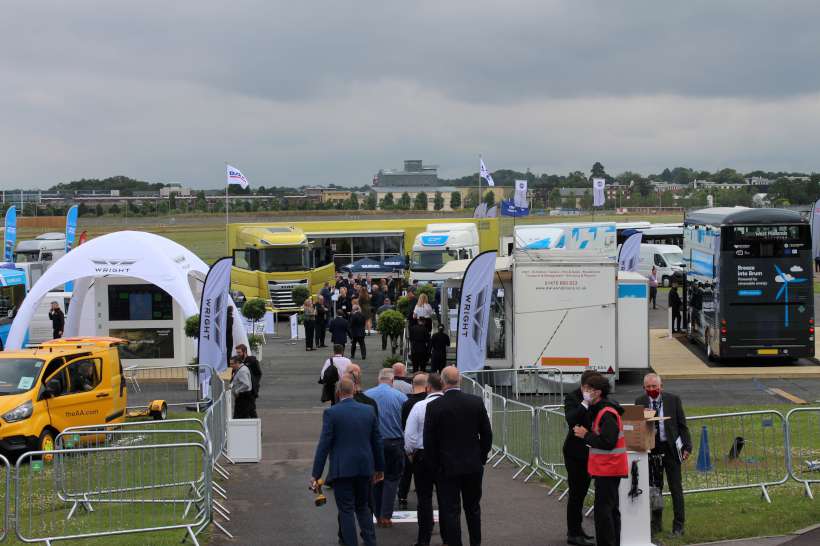
Electric Trucks on Show
Whilst the ‘star’ of the show was DAF’s diesel-powered XG+, there was plenty to tempt potential buyers of electric trucks.
DAF had their CF and LF electric trucks on show – you can order one today, but the price is steep. Work on a budget of three times the price of a diesel version and you won’t be too far out.
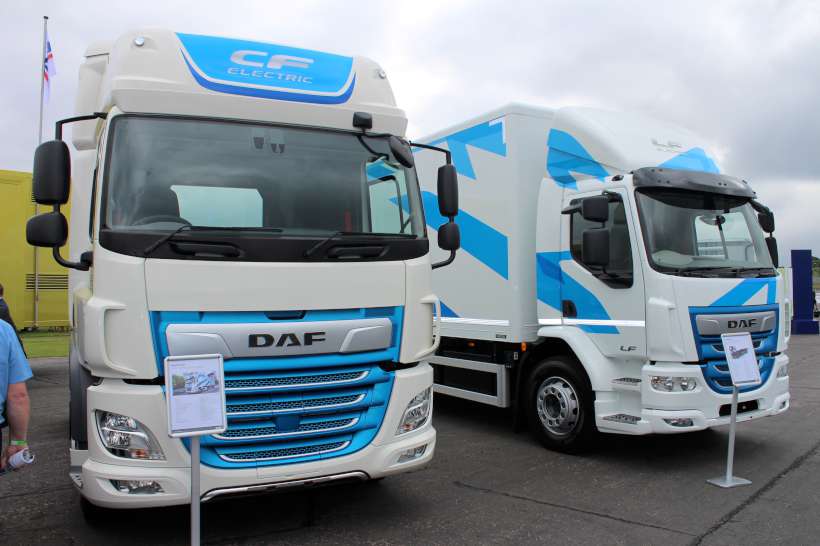
Renault Trucks brought along their impressive-looking low entry cabbed Range D ZE – without a dustcart body it looked a lot like a racing machine. These are available to buy today, and Renault have bold plans for the future as far as electricity is concerned. By 2023 they will have a tractor unit for regional distribution and a truck for urban construction. 2025 will see a hydrogen powered truck available and by 2040 the company will only sell fossil fuel free trucks, although this may still involve some internal combustion engines running bio fuels.
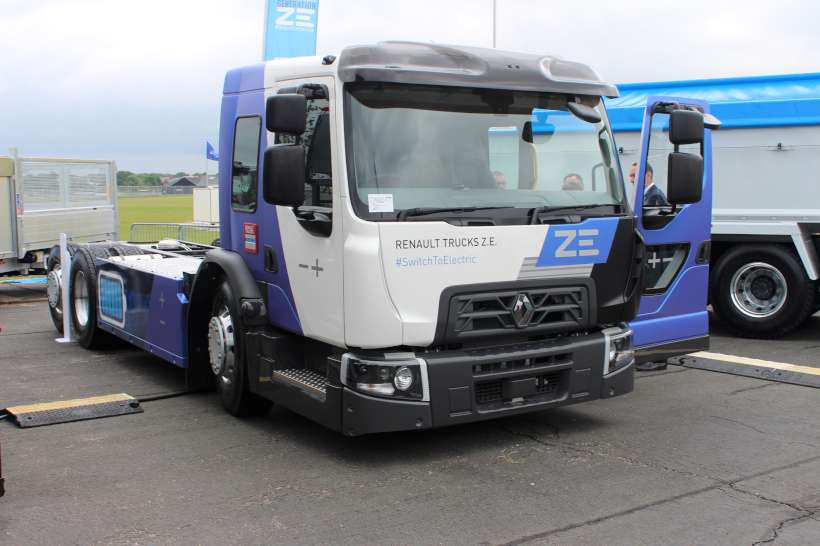
Electric Vehicle Costs
To take an example, the DAF LF has a body and payload allowance of 11.7 tonnes and you may save some money on fuel. At around 11 pence per kWh plus VAT, filling the LF up will cost around £27.50 which will get you a range of some 170 miles. The diesel cost of a similar distance would be around twice that figure.
So, the fuel savings alone won’t cover the extra cost of buying the truck (and don’t forget the charger – if you can get hold of one that is). The £5,000 a year fuel saving would take 15 years plus to start to pay back.
Whether the numbers stack up financially will be of little consequence soon. Truck operators wishing to enter an urban environment will have little or no alternative but to buy an electric truck. It is unlikely that by 2030 a diesel combustion engine will be travelling into London and other major cities. Sadiq Khan set out his plant for ‘no-fossil fuelled trucks after 2030 for London’ back in 2019.
Not Just Electric
Iveco brought along their new S-Way truck – powered by natural gas. This is technology that is available today to improve the emissions for long-distance transport, especially when using bio-methane.
Not a long-term solution for all operators, as there is not enough bio-methane for all long-distance transport in the UK, the Iveco S-Way could certainly help the companies that are currently more focused on decarbonisation.
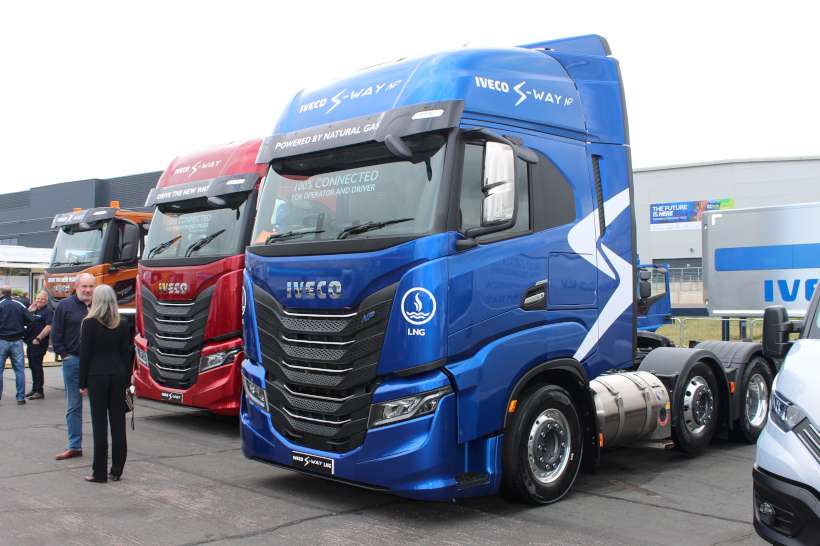
Which Long-Term Fuel for Long-Distance Trucks?
Although there were no hydrogen-powered trucks on show at the ITT, there were a number of fuel cell cars. Many people believe that hydrogen is the solution for long-distance transport, as the number of batteries required for this type of operation makes a 100% BEV impossible in the near future.
To illustrate the point, A long-distance version of the Volvo FH does exist – put together by a Swiss company Designwerk Technologies. Their Futuricum FH has battery capacity enough for 500km which sounds impressive, but the batteries weigh in at 5.5 tonnes and take up a significant amount of room behind the cab, meaning a very long wheel base tractor unit with a 4-hour plus refuelling time.
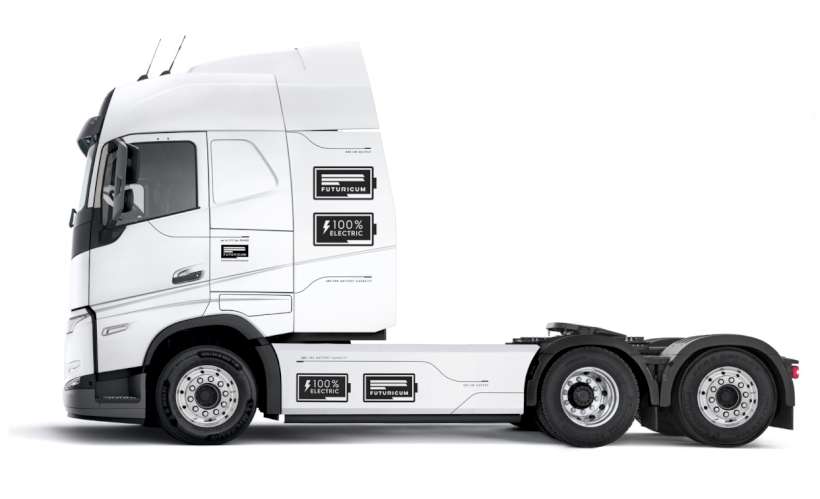
We can only guess at the cost to buy one of these trucks – with 450kWh battery storage, this is the equivalent of five Jaguar iPace cars it is bound to be jaw-droppingly dear. However, Volvo Trucks must be impressed by the company’s work – they bought 60% of it in April this year.
Hydrogen-Powered Long-Distance Truck Operation – The Problem
Back to the hydrogen – is this the panacea for powering long-distance road transport?
The issue is the amount of energy that is wasted in the whole process of getting the power to the wheels of a truck (or car).
Take 100kWh of energy generated in an offshore wind turbine. By the time it is propelling a hydrogen truck along it has lost 75% of its power and is now just giving us 25kWh of usable power. This means that you need to generate over three times the electricity used by a vehicle to power it.
According to presenter David Cebon from the Centre for Sustainable Road Freight, if all the long haul trucks converted to hydrogen operation, we would need to generate an additional 35 Giga Watts of renewable power. This figure doesn’t mean much until put into perspective of total national consumption of electricity at the moment which is about 31Giga Watts in total. This doesn’t take into account increased demand for electricity for cars, vans and trucks for urban operations.
The UK is gearing up to build more renewable capacity with planning in place for 40GW – but with long-haul trucks on board this will have to be revised upwards, especially if powered by hydrogen.
Would there be as much energy wastage with Battery Electric Vehicle (BEV) trucks? Whilst the energy transmission process is much more efficient than hydrogen, a BEV still loses around 25% of the power that has been generated.
So, what is the answer to long haul fuel for the future?
The jury is well and truly out. Some prefer the thought of an electric road system (with overhead wires like the trains run on). This is a highly efficient system, but has significant infrastructure implications, including the appearance of them and reliability in operation. Who has never heard the phrase ‘problems with overhead lines’ whilst waiting for a train to arrive?
Will battery technology advance enough and costs fall to make the weight, charging and cost trade off become more palatable for operators? Maybe.
If we can pluck the low-hanging fruit that is available – that means electric vans and smaller trucks for urban and local operation and for and battery versions to replace the 3mpg refuse trucks.
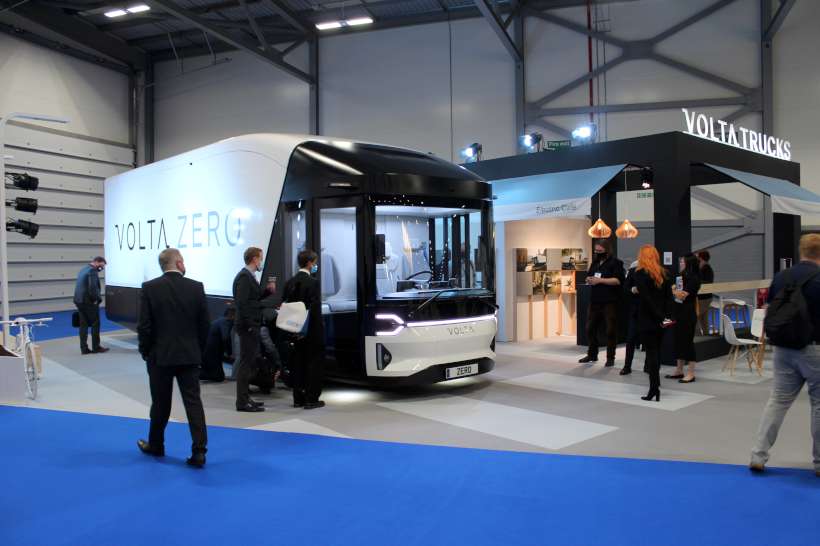
For long haul we can change from diesel to HVO or even bio methane for long-distance operation now. This will improve things until a solution is more readily available. There are plenty of people working on it.
